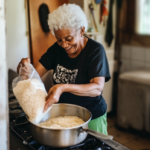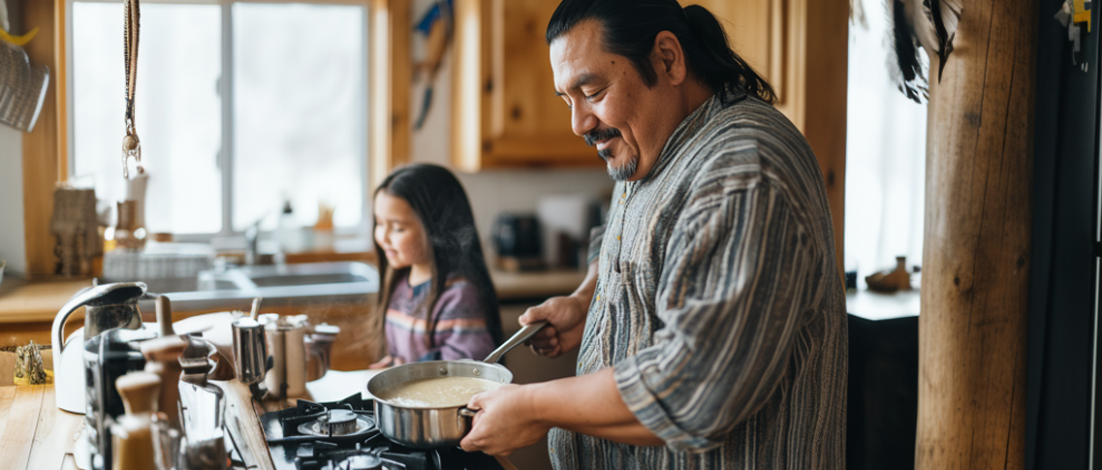Access to nutritious food is vital for health, especially for low-income communities. The Food Distribution Program on Indian Reservations (FDPIR) provides essential support to eligible Native American households by offering monthly food packages. This federal program, managed by the USDA, is designed to supplement the diets of those in need and help ensure they have access to nutritious, shelf-stable foods.
In 2022, the FDPIR served over 90,000 individuals across the U.S., delivering much-needed assistance to Native American communities on reservations and other eligible areas. Let’s explore how the program works and how it benefits participants.
To learn more about additional benefits available to you and your loved ones, sign up now for BenefitKarma!
What is the Food Distribution Program on Indian Reservations (FDPIR)?
The FDPIR is a federal initiative that provides low-income Native American households with a monthly supply of nutritious, non-perishable foods. Similar to the seniors-focused Commodity Supplemental Food Program (CSFP), the FDPIR is designed to supplement the diet of eligible individuals — offering items such as canned fruits, vegetables, grains, beans, meats, and dairy products to meet nutritional needs.
Funded by the USDA, FDPIR distributes food through tribal and intertribal organizations. There is no cost to participants as the USDA covers the expenses for both food and program administration.
Who is eligible for FDPIR?
Eligibility for the FDPIR is based on income, household size, and residency. To qualify, you must:
- Be a member of a federally recognized tribe or reside on a reservation or in a service area designated by the program.
- Have a household income at or below 130% of the federal poverty level (FPL). As of 2024, 130% of the FPL for a single-person household is approximately $18,954 per year, or about $1,579 per month. For a two-person household, it’s around $25,636 per year.
- Provide proof of income, identity, residency, and tribal membership.
For exact eligibility criteria, contact your local FDPIR office or tribal organization.
How do I apply for FDPIR?
Applying for the FDPIR is straightforward. Here’s how:
- Find a local FDPIR office: Contact your tribal or intertribal organization that administers the FDPIR, or visit their website to find a local office.
- Submit an application: Apply in person or, in some cases, online. The application will require documentation to verify eligibility.
- Provide required information: Submit proof of identity, income, residency, and tribal membership.
- Approval and pickup: After your application is reviewed and approved (usually within a few weeks), you’ll be notified about where and when to pick up your food package.
What does a typical FDPIR food package include?
A typical FDPIR food package includes a variety of nutritious, shelf-stable items. For a two-person household, this might include:
- Canned fruits and vegetables: Approximately 8-10 cans, providing essential vitamins and minerals.
- Whole grains: 2-3 pounds of rice, oats, or pasta for energy and fiber.
- Protein: 1-2 pounds of peanut butter, 4-6 cans of meat, or a bag of dry beans.
- Dairy: 1-2 pounds of cheese or powdered milk.
Participants also receive nutrition education to help maximize the benefits of their food packages, including tips on healthy eating and food preparation.
What happens if my household size changes?
If your household size changes, update your information with your local FDPIR office to adjust your benefits. Notify the office promptly to reassess your eligibility and adjust your food package. Changes in household size can affect income limits and the amount of assistance you receive.
Larger households may qualify for additional benefits, while smaller households might see a reduction. Keeping your records up-to-date ensures you receive the correct amount of support.
What other benefits are available to Native Americans?
Native Americans living on reservations may be eligible for a variety of federal and tribal benefits, in addition to the Food Distribution Program on Indian Reservations (FDPIR). Some of these benefits include:
- Supplemental Nutrition Assistance Program (SNAP) – Provides financial assistance for purchasing food, separate from FDPIR.
- Temporary Assistance for Needy Families (TANF) – Offers cash assistance and support services for low-income families.
- Indian Health Service (IHS) – Provides healthcare services at little or no cost.
- Bureau of Indian Affairs (BIA) Financial Assistance – Offers aid for basic needs like food, shelter, and utilities.
- Low Income Home Energy Assistance Program (LIHEAP) – Helps with home heating and cooling costs.
- Tribal Housing Programs – Many tribes offer housing assistance through their own programs or federal initiatives like HUD’s Indian Housing Block Grant Program.
Note: Participation in FDPIR does not affect eligibility for these (or any) other forms of government assistance.
Where can I learn more about FDPIR?
To learn more about the Food Distribution Program on Indian Reservations, contact your local tribal or intertribal FDPIR office, or visit the USDA’s website for detailed program information and application guidelines.
View Similar Articles:
 Meals on Wheels: Nourishing Seniors One Meal at a Time
Meals on Wheels: Nourishing Seniors One Meal at a Time
 How the CSFP Keeps Seniors Healthy with Nutritious Food
How the CSFP Keeps Seniors Healthy with Nutritious Food
 How the Summer Food Service Program Helps Families Through the Summer
How the Summer Food Service Program Helps Families Through the Summer
 Understanding TEFAP: How Free Food Assistance Can Support Your Family
Understanding TEFAP: How Free Food Assistance Can Support Your Family
 How the CACFP Works to Feed All Ages
How the CACFP Works to Feed All Ages
 The Federal School Breakfast Program: Starting the Day Right
The Federal School Breakfast Program: Starting the Day Right
 The National School Lunch Program: How it Works
The National School Lunch Program: How it Works
 What is WIC Program? Here’s What It’ll Buy…
What is WIC Program? Here’s What It’ll Buy…
 Understanding SNAP: Your Guide to Supplemental Nutrition Assistance
Understanding SNAP: Your Guide to Supplemental Nutrition Assistance
 Nutritional and Food Assistance Benefits: An Overview
Nutritional and Food Assistance Benefits: An Overview

